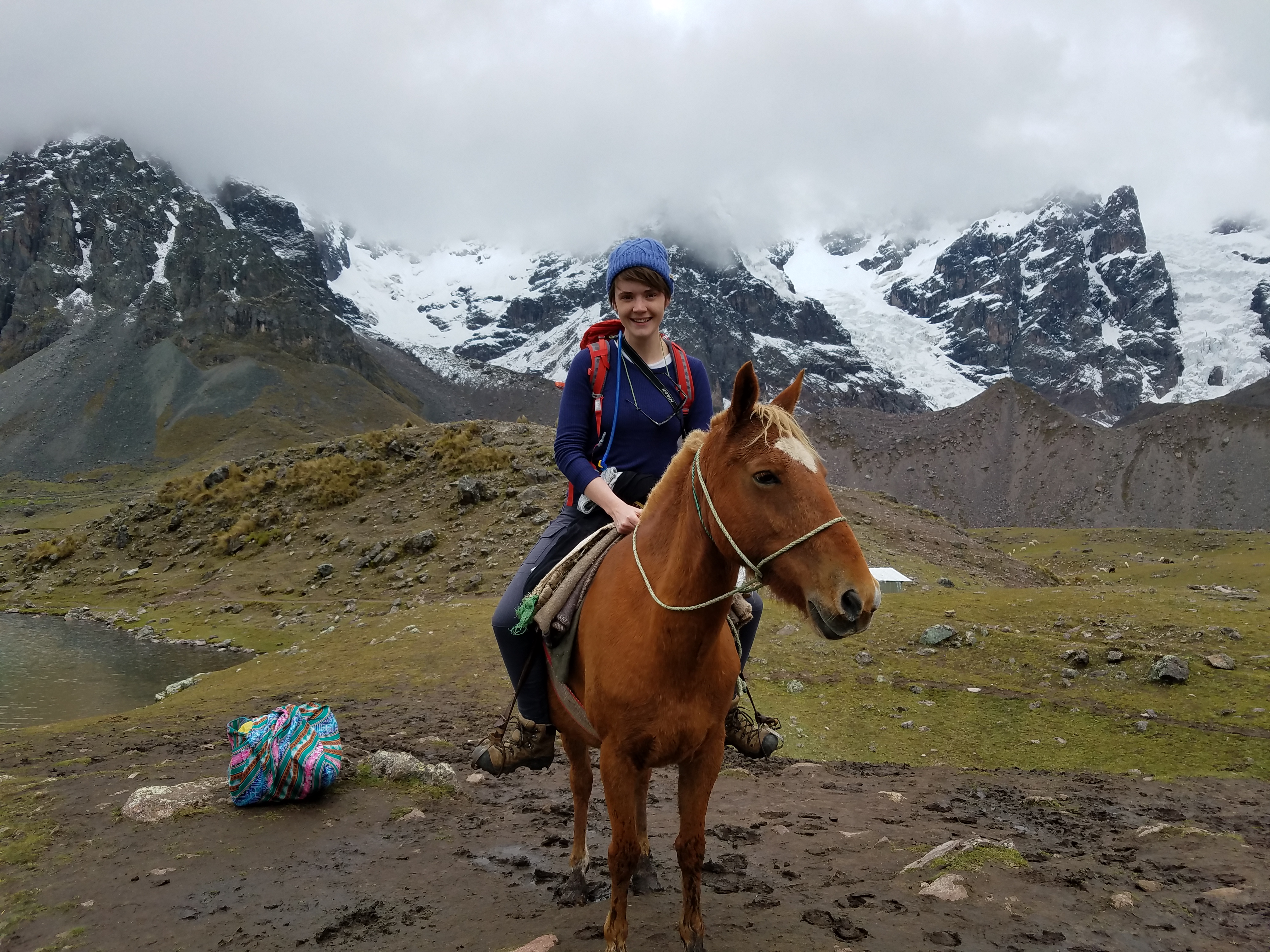Magic in the Mountains
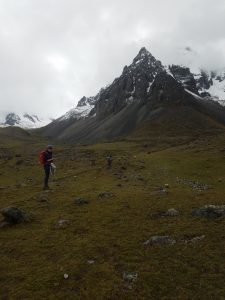 Over spring break, I had the incredible opportunity to travel to Peru. Outside of time spent on planes and buses and in airports, I spent eight days travelling around the country. It was a whirlwind tour of some of Peru’s most incredible landscapes. By trying to pack as many sights as possible into eight days, sometimes it was difficult to tell if you were out of breath from the altitude or from exhaustion. Regardless, during those eight days I trekked some incredible landscapes, ate some incredible food, and met some incredible people.
Over spring break, I had the incredible opportunity to travel to Peru. Outside of time spent on planes and buses and in airports, I spent eight days travelling around the country. It was a whirlwind tour of some of Peru’s most incredible landscapes. By trying to pack as many sights as possible into eight days, sometimes it was difficult to tell if you were out of breath from the altitude or from exhaustion. Regardless, during those eight days I trekked some incredible landscapes, ate some incredible food, and met some incredible people.
Though the mountains are towering and the rivers are raging, what was most impressive was the depth of Peruvian history and culture. For many (including myself), our history on this continent takes place in what is the blink of an eye to others. Looking out the window, the evidence of Incan and pre-Incan civilization is not difficult to spot. Often, these reminders of past civilization are the foundations on which modern communities are built.
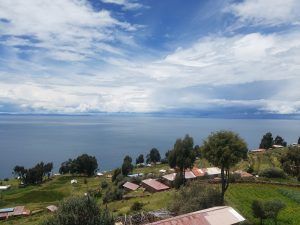
The first place that we visited was Lake Titicaca, located near the town of Puno on the border between Peru and Bolivia. It covers 3,200 miles and sits at 12,500 feet above sea level, making it the highest of the world’s navigable lakes. Its famous feature are the floating islands of the Uru people. The 1,200 inhabitants of their town live on an archipelago of floating, man-made islands, constructed from layers of thick reeds. One of the lake’s natural islands is the island of Taquile. The Quechua-speaking inhabitants of the island, known as Taquileños, live in a community collectivist society, based on the Incan code ama sua, ama llulla, ama qhilla (“do not steal, do not lie, do not be lazy”). In 2005, Taquile and its textile art were declared “Masterpieces of the Oral and Intangible Heritage of Humanity” by UNESCO.
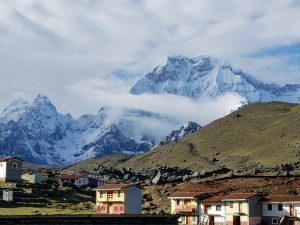
Taquile is wrapped in soft silence. When walking up the stone path to the to the island’s elevated center, the only sounds are the stirring of terraced corn and quinoa, the occasional clip-clopping of passing sheep, and the gentle murmur of Taquileños moving about their days. Their enduring customs can be seen everywhere you look. Men in bright traditional clothing can be seen knitting by the town’s square. Women, wearing long skirts and embroidered shawls, trade goods with one another according to their need. When stepping foot on the shore, one enters a world preserved; rich, intricate, and invaluable.
At every turn, I couldn’t shake the tiny gnawing question of, “how long can this really last”? Peru has experienced a resurgence of tourism, after nearly 20 years of internal armed conflict came to an end in the early 2000s. Peruvian communities are now tasked with developing the necessary infrastructure to accommodate this influx. Areas previously inaccessible to tourists now regularly have visitors. Accompanied by a tour guide, we traveled to the Andean village of Pacchanta, located near the base of the 20,800 foot, snow-covered Ausangate mountain. We drove up a steep, winding road to the village access point. Looking out the window, we saw a group of Andean villagers hauling supplies and tools to repair a section of the stone-and-gravel road. Our guide explained that he and two other independent guides had worked out an agreement with the surrounding villages. The Andean villagers would work to build better roadways to the mountains, while the guides would bring tour groups and share the revenue with the villagers.
It is certainly a gift to be able to witness the impressive views that Peru has in abundance. Sitting on 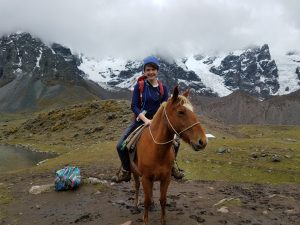 the back of a horse in the shadow of the Ausangate mountain, we heard the jet-plane sound of an avalanche in the distance. We rode past turquoise lagoons and wove through huge herds of alpacas. Peru is a country with an obvious wealth of natural wonders, but in leaving I can confidently say that they are perhaps not Peru’s most valuable resource. The unique and diverse cultures of Peru are an invaluable resource to not only the country, but to the entire world. It is not something you can pull from the ground, or harvest, or manufacture—but it is equally tangible and infinitely precious.
the back of a horse in the shadow of the Ausangate mountain, we heard the jet-plane sound of an avalanche in the distance. We rode past turquoise lagoons and wove through huge herds of alpacas. Peru is a country with an obvious wealth of natural wonders, but in leaving I can confidently say that they are perhaps not Peru’s most valuable resource. The unique and diverse cultures of Peru are an invaluable resource to not only the country, but to the entire world. It is not something you can pull from the ground, or harvest, or manufacture—but it is equally tangible and infinitely precious.
Like many countries across the globe, Peru is in a period of significant political and economic change. Current event headlines would come up in conversation, most Peruvians were the first to admit that there are problems that need fixing. However, I think we all could benefit from reminding ourselves that capital is not just financial: that the resources that can’t be quantified are often the ones most worthy of our protection.
By Maureen O’Leary, IVLP and Protocol Intern
All images courtesy of Maureen O’Leary

